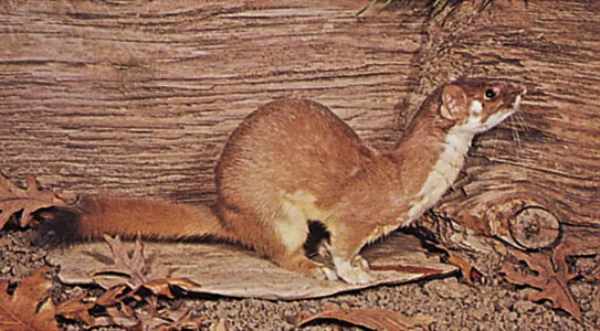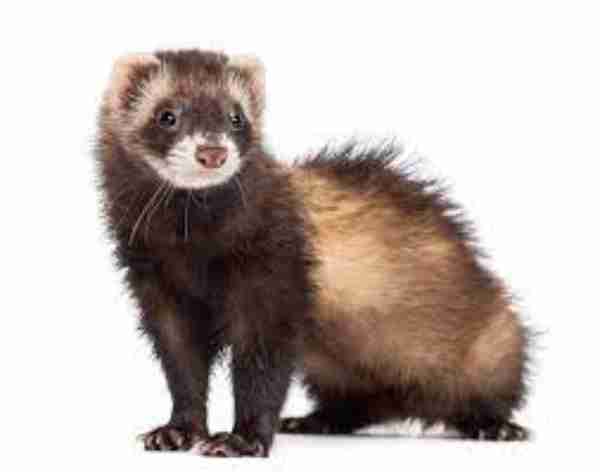Weasels and ferrets, although often mistaken for one another, belong to the same family. These agile and adorable creatures captivate our hearts with their striking similarities in appearance and personality, leaving us puzzled by their true identities.
Table of Contents
While commonly perceived as identical, weasels and ferrets possess distinct characteristics that set them apart. In this comprehensive article, we delve into the traits that differentiate these captivating small mammals, offering you a deeper understanding of their individuality.
Beyond their undeniable cuteness, it’s the playful nature of ferrets that adds an extra layer of charm. As I have personally witnessed, domesticated ferrets exhibit feline-like behaviours and can become delightful cuddle companions when properly socialized.
Join us on an illuminating expedition as we unravel the fascinating world of weasels vs. ferrets, exploring their physical attributes and dietary preferences. Prepare to gain valuable insights into these captivating creatures that will enhance your knowledge and appreciation of them.
Comparison Table
| Criteria | Weasels | Ferrets |
| Scientific name | Mustela species | Mustela putorius furo |
| Domestication | Wild animals, not domesticated | Exist in the wild but have also been domesticated |
| Size | Smaller, about 7-12 inches (18-30 cm) in length | Larger, about 20 inches (51 cm) in length |
| Weight | Lighter, around 1-2 lbs (0.5-1 kg) | Heavier, around 1.5-4 lbs (0.7-2 kg) |
| Wide range of colours, including albino | Colouration | Social animals, are active during the day and sleep for much of the night |
| Habitat | Found in many different habitats, including forests, fields, and marshes | Domesticated ferrets are kept as pets and do not have a wild habitat |
| Diet | Carnivorous, primarily hunting small mammals, birds, and insects | Carnivorous, fed a diet of meat-based pet food |
| Behavior | Solitary animals, active both day and night | Behaviour |
| Lifespan | Typically 2-3 years in the wild | Up to 8-10 years in captivity |
| Use as pets | Not commonly kept as pets | Popular as pets due to their playful and affectionate nature |
Weasels Vs. Ferrets – Habitat and Behavior
The Mustelidae family encompasses not one, but two distinct species! Enter the captivating realm of weasels and ferrets, extraordinary mammals that share intriguing biological similarities. Their slender, elongated bodies and short legs create a striking resemblance, albeit varying in size depending on their breed and type.
Remarkably, weasels thrive in colder climates, gracing regions such as Europe, Asia, Greenland, North America, and Japan. On the other hand, ferrets have established a global presence, inhabiting diverse corners of the world. Delightfully curious by nature, both species exhibit an insatiable thirst for exploration, engaging in intriguing and inquisitive endeavours.
Despite their petite frames, weasels and ferrets showcase remarkable hunting prowess, demonstrating their dexterity in capturing prey such as mice and insects whenever the opportunity arises. Beyond their hunting skills, these intelligent creatures possess captivating social structures that captivate the mind.
Prepare to embark on a captivating journey as we delve deeper into the enchanting lives of weasels and ferrets. Uncover their hidden wonders and gain a newfound appreciation for these extraordinary members of the Mustelidae family.
Physical Characteristics
Weasels

- These charming creatures boast small, slender bodies adorned with dainty legs and graceful, elongated tails.
- Weighing in at a mere 1-2 pounds (0.5-1 kg), they are true lightweight wonders.
- Their short fur exhibits a dense texture, typically showcasing hues of brown or black on the back, contrasted with a pristine white underbelly.
- Sporting pointed snouts and petite ears, they possess a distinct and endearing facial profile.
- Their nimble nature allows them to effortlessly navigate their surroundings, showcasing their agility as adept runners, proficient climbers, and skilled swimmers.
- With sharp teeth and claws at their disposal, these remarkable creatures are well-equipped for capturing and subduing their prey.
Ferrets

- With elongated bodies and compact, furry tails, these creatures are just a tad larger than weasels.
- Their weight ranges between 1.5-4 pounds (0.7-2 kg), showcasing a touch more heft.
- Donning a captivating array of fur colours, including black, white, brown, and delightful mixed patterns.
- Their features exhibit a rounder snout and larger ears, setting them apart from their weasel counterparts.
- Renowned for their agility and playfulness, these animals are masters of acrobatics and possess an insatiable love for toys.
- While armed with sharp teeth and claws, their domestication means that hunting is not their primary focus.
Ultimately, weasels and ferrets share some physical similarities but differ in size, fur colouration, and behavioural tendencies.
Differences in Feeding Habits
Contrary to popular belief, there is a significant difference in the eating habits of weasels and ferrets. Weasels are known for their carnivorous diet, while ferrets have a varied diet consisting of meat-based proteins, grains, and vegetables.
It’s essential to note that a high-quality ferret diet should be nutritionally balanced, providing essential vitamins and minerals to keep them healthy. This nutritional balance is essential as it’s not often found in the wild for weasels.
One thing they do have in common is that both weasels and ferrets require a steady supply of fresh water daily to maintain their health.
Examining their Social Behaviors
A closer look into the social behaviours of weasels and ferrets unveils their remarkable penchant for social interaction. Through research efforts, such as the observation of ferret families in their natural habitats, it has been discovered that both weasels and ferrets form cohesive family units.
Within these family units, weasels and ferrets engage in close daily interactions with their relatives and other individuals in their surroundings. This shared social behaviour highlights the close relationship between these two closely related cousins in the Mustelid family. These interactions encompass a range of activities, including playful behaviour and mutual grooming, where they groom each other’s fur.
By studying these observations, we can identify common behavioural trends between these animals. This not only enhances our understanding of how weasels and ferrets interact with each other but also emphasizes the importance of socialization for all creatures in our ecosystem.
Weasel vs. Ferret: Hunting Abilities and Natural Instincts
While weasels and ferrets may look alike at first glance, their instincts drive them toward different hunting behaviours. Weasels, with their agile bodies and sharp teeth, thrive in open areas and prefer to hunt during the day.
On the other hand, ferrets are better suited for smaller, enclosed spaces and can hunt over longer periods of time due to their small size and powerful scent-tracking abilities.
By understanding these differences in instinctual behaviour, we can better spot these creatures in the wild and gain insight into their hunting habits.
Discussing Whether Weasels or Ferrets Make Better Pets
Unfortunately, weasels are not suitable as pets due to their aggressive nature. In many U.S. states, it is even illegal to keep them as pets because they are considered wild and exotic animals. These energetic creatures require ample space to roam and explore, making it challenging for them to adapt to a domestic environment.
Moreover, weasels have a tendency to be destructive, posing a risk to furniture, carpets, and other household items. Their specialized dietary needs can also be difficult to meet in a domestic setting. Considering these factors, weasels are not recommended as pets.
In contrast, ferrets are popular choices as pets because of their highly social and playful nature. However, they require specific care, including a high-quality diet, regular veterinary check-ups, and frequent grooming. Spaying or neutering is also important for their well-being, and they should be housed in secure cages when unsupervised.
Due to their high energy levels and playful disposition, ferrets thrive with a variety of toys and interactive activities. Providing a range of toys and regularly rotating them helps to keep your ferret engaged and entertained.
Frequently Asked Questions
What is the difference between a weasel and a ferret?
When it comes to small, furry animals, the distinction between a weasel and a ferret might not seem all that important. However, there are some key differences between these two creatures that are worth noting. For starters, weasels tend to be slightly larger than ferrets and have longer, more slender bodies.
They also have a more predatory nature and are known for their ability to hunt rodents and small wildlife. Ferrets, on the other hand, are often kept as pets and have a more playful demeanour. They also have a distinct odour that can be off-putting to some, but which others find endearing.
Are weasels and ferrets kept as pets?
Weasels and ferrets are often kept as pets, although they require a considerable amount of care and specialized attention. These animals are highly intelligent, playful, and social, making them popular among those seeking a unique pet. However, their curious nature can lead to trouble, as they are prone to investigating small spaces and getting into mischief.
Can weasels and ferrets be found in the wild?
Weasels and ferrets are two distinct members of the Mustelidae family, which also includes otters, badgers, and minks. While ferrets are typically domesticated, breeding and maintaining populations for hunting or pets, the same cannot be said for weasels. Weasels can occasionally be found in the wild, either as European or North American species, known for their diminutive size and quick movements.
What do weasels and ferrets eat?
Weasels and ferrets are two members of the mustelid family, and they share a similar diet. These carnivorous creatures are skilled hunters, preying on small mammals, birds, and reptiles. Weasels are known for their high metabolism, requiring a diet of up to 40% of their body weight daily. Ferrets, on the other hand, have a slower metabolism and are fed portioned diets by their owners.
Are weasels and ferrets dangerous to humans?
It’s a common misconception that weasels and ferrets pose a threat to humans, but the reality is quite the opposite. These small creatures are timid and elusive and will usually try to avoid contact with us whenever possible. While it’s true that weasels can be a bit more aggressive, the likelihood of encountering one is quite rare, especially if you take the necessary precautions.
Final Words
Throughout the animal kingdom, there are creatures that seem similar on the surface but have distinct differences upon closer inspection. The same can be said of weasels and ferrets. While they may look alike, weasels are generally sleeker and more agile than ferrets. In addition, weasels tend to prefer a solitary lifestyle and can be quite independent. On the other hand, ferrets are much more social creatures that crave attention from their owners.
This makes them excellent pets for those who are willing to give them the loving care that they deserve. Finally, while both weasels and ferrets can be kept as pets, ferrets are the more domesticated of the two. They are known to be very friendly animals, whereas weasels can sometimes be aggressive and are better left to their own devices.
Reference:
- https://www.legalizeferrets.org/beware-the-dreaded-skunk-ferret-hybrid/
- https://williamsburgvetclinic.com/blog/ferrets-10-things-to-know-about-the-jokers-of-the-animal-world
- https://dlnr.hawaii.gov/hisc/info/invasive-species-profiles/mongoose/

Zahra Makda
Growing up enjoying the beauty of my village, a good passion for nature developed in me from childhood. Following my passion for the natural world, I have chosen zoology for my graduation, during my undergraduate degree, I participated in many nature trails, bird watching, rescues, training for wildlife conservation, workshop, and seminars on biodiversity. I have a keen interest in invertebrate biology, herpetology, and ornithology. Primary interests include studies on taxonomy, ecology, habitat and behavior.









